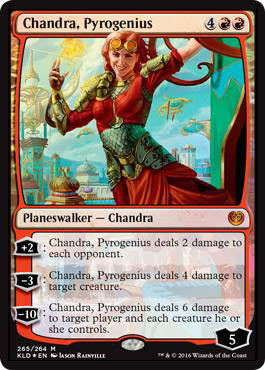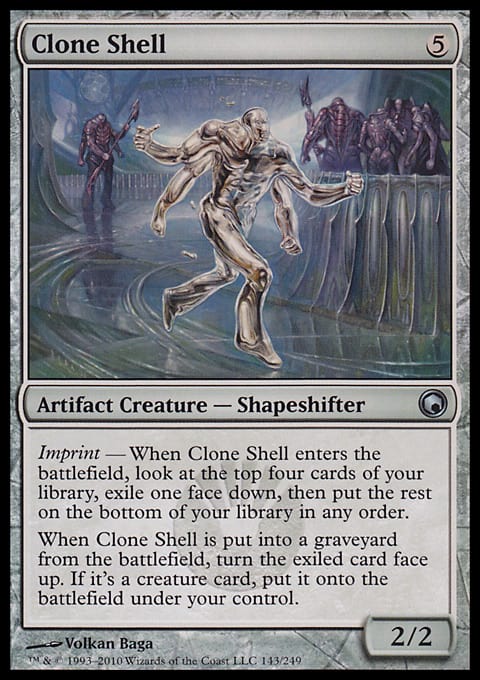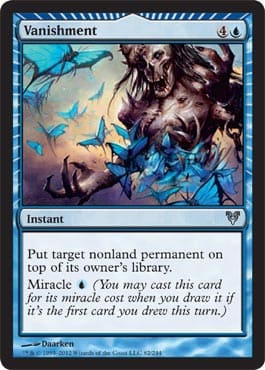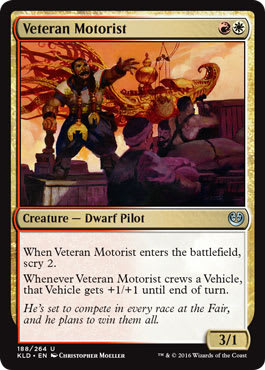As anyone who’s spent any time reading Mark Rosewater’s “Blogatog” Tumblr in the run up to Kaladesh can attest to, “patience” has been a common refrain. As each successive wave of spoilers was released, some readers expressed concerns about this mechanic or that card or one of any other number of things. Like a soft but steady drumbeat came the replies:
“Wait until the whole set is spoiled.”
“Wait until you’ve had a chance to play with it.”
“Try it first.”
In short . . . patience, grasshoppers!
I’d watched this unfold with bemusement, since I’ve tended to take a more ‘historical’ view of the game, but that doesn’t mean I didn’t learn a bit of a lesson myself in this set, either.
Longtime readers may recall that back in late May, I wrote an article here expressing my dismay at the news Intro Packs were going to be phased out, replaced with Planeswalker Decks. There were a few reasons for concern, including the suitability of the Planeswalker Deck for instruction, but my largest misgiving was centered on the idea of the Preconstructed deck as a “museum piece.” Indeed, this was the notion that sparked my passion for Preconstructed Magic in the first place.
Back in 2008, I returned to Magic for Zendikar after a very lengthy absence. I hadn’t bought a booster pack since Urza’s Destiny, and I found myself very curious about the changes to the game over the many years I’d been away. I wanted to see what sorts of themes and mechanics they’d made (in addition to new card types like Equipment, and these Planeswalkers everyone was talking about). Dumping a ton of money into old cards seemed like a bad way to get a sense of the sets I’d missed, but then it dawned on me that I could get a good sense of what the designers had in mind for a world by playing the Theme Decks and Intro Packs. And just like that, “Preconstructed Magic” became my genre of choice.
That’s not to say that the idea of preconstructed decks as museum pieces was not without its shortcomings. If Zendikar’s in-house tagline was “maps, traps, and chaps,” you could certainly get an immersive “chaps” experience with the Ally-packed The Adventurers Intro Pack. Maps and traps, however? Not so much. Unstable Terrain had two copies of Ior Ruin Expedition, which was the only quest card in any of the five Zendikar Intro Packs. And traps? Not a one.
If you wanted to experience imprint from Scars of Mirrodin through the Preconstructed lens, you were similarly out of luck. Given the complexity of imprint, however, and the relatively few cards that had the ability (most of which were rare), the exclusion is understandable, though it does lead one to wonder why they couldn’t have just jammed a Clone Shell in somewhere and called it good.
Although having a full deck devoted to a particular or mechanic was often the norm, sometimes you’d have to settle for even a modest inclusion. Curses, from the original Innistrad in 2011, were contained within just two of the five Intro Decks. As with imprint, though, this seemed a modest secondary mechanic across four colors- not really suitable for anchoring an Intro Pack. Dual-faced cards, like the Werewolves, turned out not to be feasible for inclusion in a supplemental product due to printing challenges, which was a much harder pill to swallow.
And a deck based around Dark Ascension’s fateful hour would have been almost unplayable, since you’d need to get down to 5 or less life for the “theme” to even kick in. Here, a splash makes sense, such as with the three Gather the Townsfolk included in Dark Sacrifice.
By the same token, when even a splashable mechanic is left out, it’s a disappointment from the “museum piece” perspective. Avacyn Restored had an entire deck dedicated to the soulbond mechanic, but not a single miracle in all its Intro Pack decks. Because they’re designed as “tournament decks” rather than set showcases, I don’t really include Event Decks here, but it’s worth noting that there weren’t any miracle cards there, either. To this day, I still haven’t cast one. Not a Banishing Stroke. Not a Vanishment. Nada.
Theros Block and Khans of Tarkir Block both did a great job ensuring that if a mechanic was important enough to include, it was important enough to have represented in an Intro Pack. This is somewhat more easy in a set like Khans of Tarkir or Return to Ravnica, where each deck is focused on a guild/clan. But if you wanted to experience what awaken or converge added to Battle for Zendikar, well, you were out of luck.
At the time I wrote the article, we were still approaching Eldritch Moon, which would have its own gaps in the “museum record.” Meld would fall into the same hole as transform, due to the prohibitive cost of printing DFC’s for a supplemental product. However, perplexingly, emerge would also find itself left on the cutting room floor. This was very surprising, as I was confident that once Ulvenwald Observer was spoiled as an Intro Pack premium rare, it would help anchor a deck based around self-sacrifice.
And if Wizards of the Coast was struggling to find space for all the mechanics of a set in the Intro Packs with five decks . . . how much worse were things going to be with Kaladesh? The new standard would not only be a reduction down to two precon decks (with Event Decks and Clash Packs by now permanently in the rearview mirror), but those two decks would themselves have their ‘own’ Planeswalker-centric theme.
From the perspective of seeing Intro Packs as history in a box, the flies trapped in amber from a particular set, this was gravely disappointing. How many mechanics would be excluded entirely, never to be immortalized in Preconstructed (or digitized) cardboard? Or if they were, would it be some non-set placement like a Commander deck supplemental product or Duels decklist?
But then a funny thing happened on the way to the Colosseum. It seems while I was wrestling with the problem of mechanical/thematic omission in Intro Packs, Wizards of the Coast was tacking the problem (sort of) from a different angle. Here’s Mark Rosewater.
“Because really in the end what happened was, I delivered too many mechanics. The set had six mechanics.” -Drive to Work Podcast #369, Lessons Learned – Khans of Tarkir
“In general, moving forward, I am questioning removing mechanics in the large set from the small set. The majority of the times we've done it we've created more dissatisfaction than happiness. This dovetails with my desire to lower the number of new mechanics we're introducing overall per block.” -State of Design 2016
Perhaps, like the grasshoppers above, I just needed a little patience, too, because last week, the full set list and Planeswalker Deck contents went up. I was certainly in for a surprise.
Chandra, Pyrogenius ? Kaladesh Planeswalker Decks| Wizards of the Coast
- Creatures (17)
- 1 Brazen Scourge
- 1 Gearshift Ace
- 1 Skyswirl Harrier
- 1 Snare Thopter
- 1 Speedway Fanatic
- 1 Weldfast Monitor
- 2 Aerial Responder
- 2 Spireside Infiltrator
- 2 Trusty Companion
- 2 Veteran Motorist
- 3 Renegade Firebrand
- Planeswalkers (1)
- 1 Chandra, Pyrogenius
- Spells (17)
- 1 Fateful Showdown
- 2 Built to Last
- 4 Flame Lash
- 1 Cathartic Reunion
- 2 Liberating Combustion
- 1 Bomat Bazaar Barge
- 1 Fleetwheel Cruiser
- 1 Ovalchase Dragster
- 2 Renegade Freighter
- 2 Sky Skiff
- Lands (25)
- 10 Plains
- 11 Mountain
- 4 Stone Quarry
Nissa, Nature?s Artisan ? Kaladesh Planeswalker Decks | Wizards of the Coast
- Creatures (27)
- 1 Aethersquall Ancient
- 1 Bristling Hydra
- 1 Riparian Tiger
- 1 Sage of Shaila's Claim
- 2 Arborback Stomper
- 2 Empyreal Voyager
- 2 Janjeet Sentry
- 2 Long-Finned Skywhale
- 2 Longtusk Cub
- 2 Servant of the Conduit
- 2 Thriving Rhino
- 2 Thriving Turtle
- 3 Guardian of the Great Conduit
- 4 Terrain Elemental
- Planeswalkers (1)
- 1 Nissa, Nature's Artisan
- Spells (9)
- 2 Appetite for the Unnatural
- 2 Verdant Crescendo
- 3 Attune with Aether
- 2 Malfunction
- Lands (23)
- 11 Forest
- 8 Island
- 4 Woodland Stream
As you’d expect, Chandra’s deck is a collection of reasonably-aggressive creatures, backed up by some burn to help keep the red zone clear of any obstacles. A slate of seven Vehicles is surprisingly deep, and the inclusion of mechanic-centric cards like Speedway Fanatic, Gearshift Ace, and Veteran Motorist really elevate that aspect of the deck.
Nissa’s deck, meanwhile, goes in the Energy direction. Only four of the fourteen distinct creatures in the deck don’t reference Energy in some way, and three copies of Attune with Aether underline it further still. There’s comparatively few cards that don’t have a power and toughness value in the deck, so it’s unlikely to be going a game with this deck without wading right into the thick of one of Kaladesh’s signature mechanics.
As mentioned earlier, I wasn’t thrilled when I learned that the Planeswalker Decks would be Planeswalker-themed, as it felt like we’d be losing the magic of what makes each set distinctive and innovative in favor of an on-brand product with new cards to entice a larger buying audience. But that hasn’t exactly happened. Sure, you get a nice, shiny new Planeswalker with each deck, and a few new cards that tie in with it (Renegade Firebrand, Liberating Congestion, Guardian of the Great Conduit, Verdant Crescendo), but the little strip of real estate they occupy when compared to the mechanics of Kaladesh makes them feel like a subtheme, not a primary focus.
Instead, we get to generate Energy. And drive Vehicles.
And fabricate? Well . . .
By ratcheting down the number of mechanics and the number of Preconstructed decks, we still have the ability to let them serve as museum pieces for the set’s identity. While it’s unfortunate that each color won’t get its chance to shine (Black isn’t present in either deck this time around), and we still don’t see full representation of themes and mechanics (no fabricate here), I’m happy (and relieved) with the way the Planeswalker Decks turned out.
Who can say how long this lasts — after all, we could be right back at six mechanics in Amonkhet next year, but I certainly hope not. I’d much prefer to see a smaller number of mechanics with greater depth evolve from big set to small set rather than a ten-course meal of appetizers. Rosewater specifically highlighted investigate as an example of where he felt they’d have been better off building on first-set mechanics rather than replacing them.
If that means we have to wait a set to get a fabricate-themed deck, I’ll be delighted to do so. Planeswalker Decks aren’t perfect — nor were Intro Packs — but overall this has a lot of promise.
Here’s to hope. And a well-stocked museum.




























